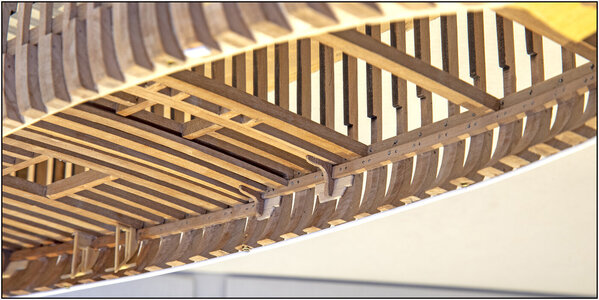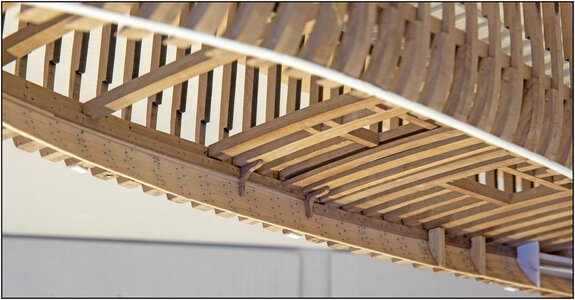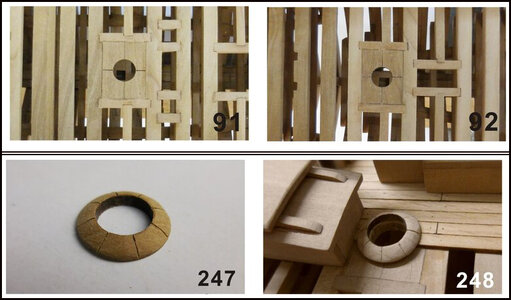Not entirely there yet and I hope I'm seeing "lions and bears on the road", but I experienced (and admittedly, the holes for the masts were slightly oversized on my Bluenose model) that the standing- ánd running rigging did influence the orientation of the masts. So if you consider the deck feedthroughs as hinge points for the upper mast parts, one could affect the alignment of the interface with the lower mast parts by tightening or loosening any of the rigging ropes.
As long as you don't separate the two halves, there's no issue, but alternating between connected and separated in combination with the influence of varying temperatures, fluctuating humidity and the elasticity/flexibility of the rigging and the model's structure you could experience misalignment. How much? I really wouldn't know.
That's why I assumed a tapered pin/bush interface.
Still, highly impressed with your ideas and your planning way ahead of the build;

Kind regards, Johan
Regarding your concerns, if the mast hole is tight (controlled by square plate with hole, planking around it and mast base), then the shroud lines and stays, along with gluing the upper mast, will keep the upper mast very rigid. At which point, he can then align the notch in the lower masts with the now permanently fixed upper masts, and glue the lower masts in place. In addition I believe he said the pin in the lower mast is tapered. I would recommend a tapered lead in or chamfer in the hole ( made with a rat tail file) in the upper mast as well, to ensure alignment… if he hasn’t already done that.

Yes, I'm there, I see the pin/hole in the mast parts. And your recommendation of tapering the hole makes a lot of sense. Let's wait and see what concoctions Peter is brewing. Fascinating build.
Not only is this visually an extraordinary build, but also from a technical point of view. I also think that securing the upper mast first and then aligning the bottom one in accordance to that, would be the way to go. However, I am positive that Peter has that all well covered.
First of all, I want to emphasize that I really appreciate your contributions! And that you think along with the mounting of the masts, which is quite a fragile subject!

Let me try to reassure you. I don't see any bears of lions on the road and I thought about it for quite a while.
The fixation in the deck:
The blocks that should be placed in the recesses between the deck beams now have a throughput that is too small for the masts:
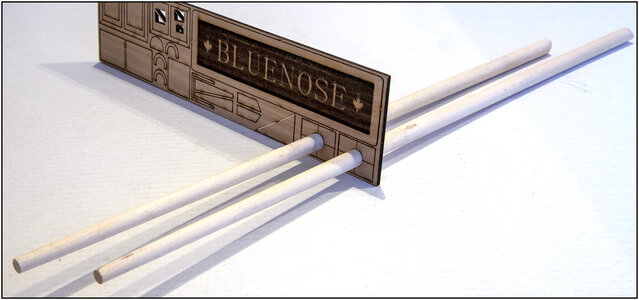
I can sand them to size and little angle so that the transit point of the masts is exactly in line and that they clamp. And I can aligning both mast parts through that hole to glue at the same time the bottom part in the mast feet and the upper part in block hole.
The connection of the mast parts:
The pin does indeed have a little chamfer at the top:
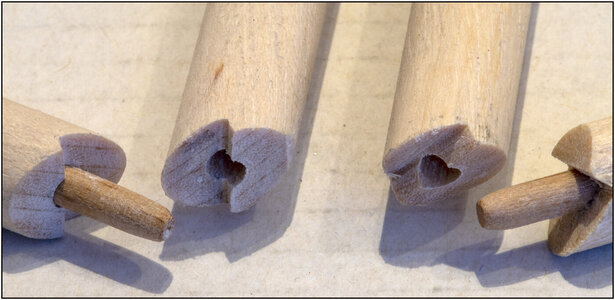
This is very macro of the 8.5 mm / 0,333" masts with the 3.0 mm pins (as opposed to the previously mentioned 2 mm).
In my opinion sufficient to find the centering to slide into each other even with the slight slant to the rear of the masts.
PS: Only the masts were cut diagonally and then filed into shape with the jeweler's files.
The friction of the connection:
The pins in the bottom part has such a thickness that they clamps slightly. Free hanging, with the immense weight of a clothespin

, it does not slide out:
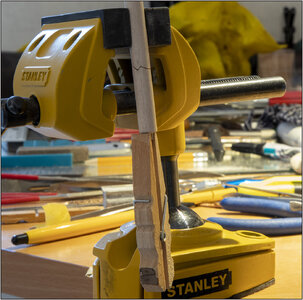
Just enough to slide when I put both hull parts together or take them out.
The fit of the pin and hole:
I can clamp the lower part in the vice and then the mast only bends a little bit:
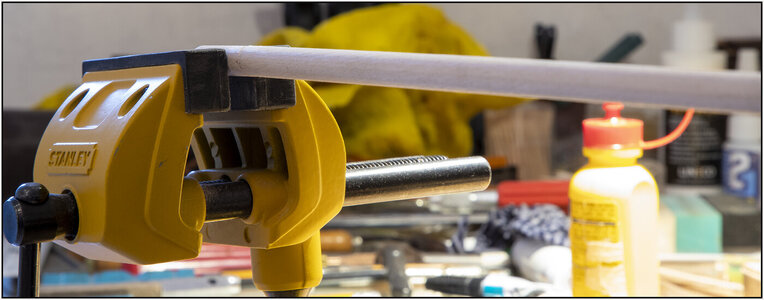
Once the masts are in place, the shrouds, and (side) stays will fix the masts imposition. I am confident that will last for many years to come. My Mirage has been standing for almost 40 years now. And when I take her out of the display case to clean it on the inside, I can still grab her by the masts and lift her up.
So, I hope you can relax and sit back.

Regards, Peter






